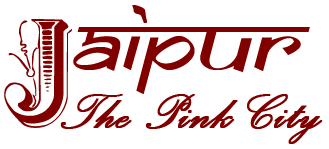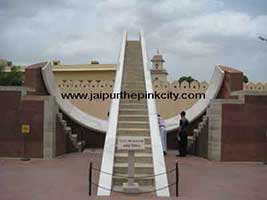

|
Jantar Mantar Jaipur ObservatoryJantar Mantar Jaipur observatory has many architectural astronomical instruments of 1728. These instruments of Jantar Mantar help to calculate Jaipur local time, declination of stars, locate the pole star, indicate the hemispherical position of heavenly bodies, calculate the positions of various constellations at different intervals, Meridian Pass time, Zenith Distance, altitude of the heavenly bodies etc. These instruments are architectural masonry structures. Jantar Mantar Jaipur is a World Heritage Site of UNESCO because it is the only well preserved observatory of India.
Jantar Mantar Jaipur HistoryJantar Mantar Jaipur observatory was constructed by Maharja Sawai Jai Singh II - the founder of Jaipur. Jantar Mantar terminology is derived from two words of Sanskrit language, “Yantra” and “Mantra”. “Yantra” means “Instrument” and “Mantra” means mysterious formulae for calculations. Hence, Jantar Mantar word represents the instruments used for various calculations. Being a great astrologer and the master of astronomy, Maharaja Sawai Jai Singh II, thought of constructing an Observatory in 1718, and named it Jantar Mantar. For the purpose, he studied several books on the subject of astronomy. He was helped in his studies by Pt. Jagannath Samrat (who had a good command on several languages) and also by Pt. Keval Ramji, a numerical euhemerist. Both of those scholars translated several authoritative works written in various languages on mathematics and astronomy to Sanskrit, because of which the Maharaja got lot of help in fulfilling his great ambition of constructing Jantar Mantar. After concentrating his studies on the subject for several years, Maharaja built the first Jantar Mantar, as an experimental measure, at Delhi in the year 1724. He constructed observatories at four other centres in India namely Jaipur, Ujjain, Banaras, and Mathura. The observatory at Jaipur is the biggest one in India. The “Rashi Valaya” instrument is not found in other observatories. Maharaja Sawai Jai Singh II himself used to sit for astronomical observations here. Jantar Mantar was renovated in the time of Raja Madhava Singh, in the year 1901 A.D. In the act of renovation, lot of help was rendered by Pt. Chandra Dhara Sharma Culeri, Mr. Carret and Pt. Gokul Chandra Bhavan. In place of stone and lime, Marble stone was used in renovation. After some time, a great scholar of the subject late Pt. Kedarnath was appointed as the incharge of Jantar Mantar and he corrected the “Shasthansha” instrument, as it was then giving wrong calculations. He conserved Jantar Mantar of Jaipur and the one at Delhi on scientific lines. Jantar Mantar of Jaipur is the most well preserved observatory of India. UNESCO inscribed Jantar Mantar Jaipur in the list of World Heritage in July 2010. No need to say that Jaipur tour has any means without visiting this wonderful World Heritage. Description of all the instruments in Jantar Mantar is as follows:- The “Small Sun Dial” in Jantar Mantar 
Small sun dial is known as “Laghu Samrat Yantra” in Hindi. When we enter Jantar Mantar, it is the first instrument to be observed. It is made of red sandstone and marble. It is in triangular shape. Its hypotenuse is inclined at an angle of 27 degree, which is equivalent to the latitude of Jaipur. It is calibrated in the scale of tangent so as to measure the declination of celestial bodies. It has two quadrants on either side inclined in the plane of celestial equator by 23 degrees and divided by 6 hours. Each hour is divided in 60 minutes and each minute by three fractions so that the precision of the time observed is 20 seconds. The shadow of the gnomon falls on the quadrants and by observing it; we can read the local time. The difference between the Jaipur time and Indian Standard time varies from 10 minutes 25 seconds to 41 minutes 6 seconds. For ascertaining the declination of sun, we can place a pointer on the gnomon. The shadow of the gnomon already falls on the quadrants and when the shadow of the pointer intersects that shadow, the point on which the pointer is kept is the declination of the sun. During night, this instrument is used for observing the declination of stars. Suggested Readings for Jantar Mantar JaipurPeople also search for
|
|||||||||
|
Book Tour for Anywhere Jaipur Tour Explore Jaipur Jaipur Tour Attractions Organize Your Trip Jaipur Practical Info |
Travel With Us
|
You were reading Travel article about Jantar Mantar Jaipur, posted by Sameer Goyal on 14 December 2010.